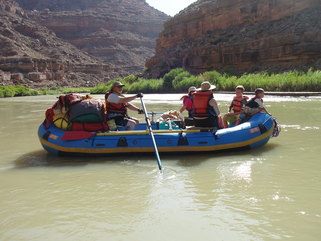 I’ve finished the final draft of my current project, which is a novel about a genius rich guy who kills people for the benefit of America. It’s set against two global calamities: cleaning up the trash in the ocean and pervasive homelessness. They may not sound related, but I create a story that intertwines both. It is a surprisingly good morality tale that has a lot of action, fear, ruthlessness, and dead bodies. I became interested in developing this story because of the current crisis concerning ocean pollution; Featuring the homeless came later. I’ve submitted the manuscript to my editor and it is in his queue for editing. The cover has been finished and the book’s advertised publication date is April 1, 2019, which means that what I’ve written is definitely on track to become a genuine novel. To this point, it’s been a little more than a year since I wrote down the beginning words, although I spent several years of thinking about it. I was also ready to quit on it back in April, so getting this far is especially sweet. It may take until after Christmas to get the first edited version back. My editor and I will iterate to something that we’re both happy with, then hand it to a proofreader. When she’s done, it goes to the publisher, who is also the compositor. He moves all the words into a book format, adds the title pages and publishing information, adds the front and back covers, and then ships everything electronically to the printer. The printer creates several copies of the book as proofs and sends them to the publisher, the editor, and me. I will go through the book, send any corrections to the editor for review, and he will send the changes to the publisher, who will then make the changes in the printer’s copy. If everything looks good, the printer will use the new version to produce ARCs – Advanced Review Copies – and the publisher will distribute those copies to various reviewers and readers. The ARCs have a disclaimer that changes to the text may be made. The purpose of the ARCs is to gleam great quotes that can be added to the cover or to the marketing information for when the book is made publicly available, plus to give us one more chance to catch mistakes or to react to comments from readers. After another iteration, the book will be printed for public distribution. My publisher will create and distribute e-book versions. Being this careful and repetitious is necessary. One of my books had a whole chapter missing until I discovered it in the proof. I also have found mistakes at the ARC level. Sometimes it’s my fault, sometimes not. Most people in the chain are not as careful as I am. At some point, it will all be done and I will have nothing to do but bask in my accomplishment. What then? Many writers are chock full of ideas and immediately plunge into another novel if they haven’t already started. I’m not driven to multitasking so I spend time mulling my options. I use the now undedicated time to read other fiction books, reviews of fiction books, writing books, other non-fiction books (I’m keen on history and biographies), and generally identify interesting things to put together for an interesting story. I’ve been thinking of a new story for a few months. I had a friend point me to a book about the history of tuberculosis clinics in the Southwest, particularly in New Mexico. Did you know that tuberculosis was usually the leading cause of death through the 1800s and the first four decades of the 1900s? It was called consumption and it was a miserable way to die. The treatment of the day was in three parts: a good diet, a hot, dry climate, and inactivity. It was also thought that a high altitude was beneficial (the creation of streptomycin in 1944 led to the real cure). Cities in Arizona and New Mexico heavily advertised their climate and care facilities for those people infected with tuberculosis. Large tent cities sprang up around Phoenix, Tucson, Silver City, and Albuquerque. It’s a fascinating history and played a major role in the economic development of both states. That’s one thought. I also read a couple of books about Preparatory Schools in the early 20th century that were based on ranch life (as in cattle ranches) – outdoor living in ranch environments that taught outdoor survival schools as well as academic courses. It was fascinating stuff and many of the ranch schools were located in Arizona and New Mexico. The Los Alamos Ranch School, in particular, was a nationally recognized ranch school in the 1920s and 1930s. Along the way, I also read Red Sky at Morning, by Richard Bradford. It’s a story in the World War II timeframe that is a famous “coming of age” story of a young boy. It’s a great story. Mix those ideas together and I’m thinking of a new story that feels worth writing. It might be a Young Adult novel, which I haven’t done before. I have to decide whether what I find interesting is interesting enough to use a year of my time and effort to create a story not only exciting to me but to other people. Life is short, so I have to make a good choice.
0 Comments
Leave a Reply. |
AuthorDon Willerton has been a reader all his life and yearns to write words like the authors he has read. He's working hard at it and invites others to share their experiences. |

 RSS Feed
RSS Feed